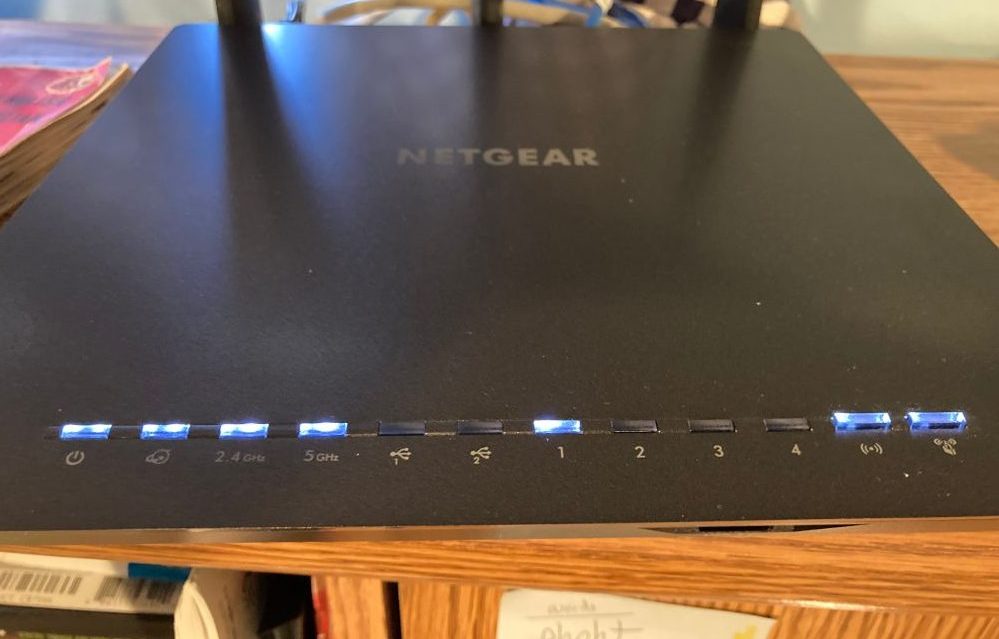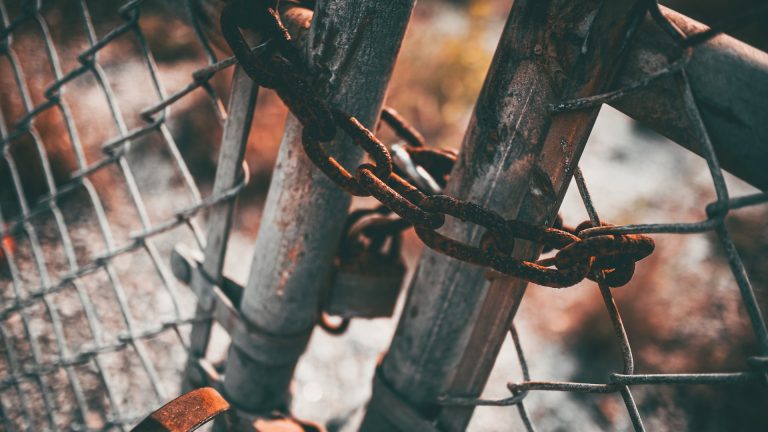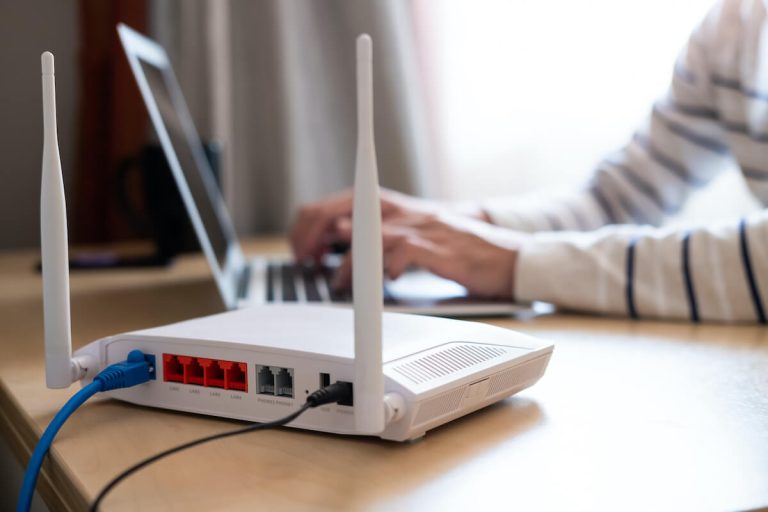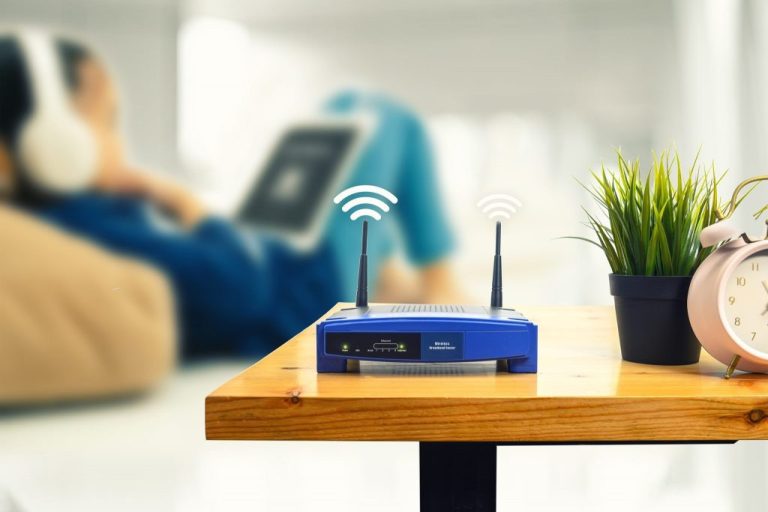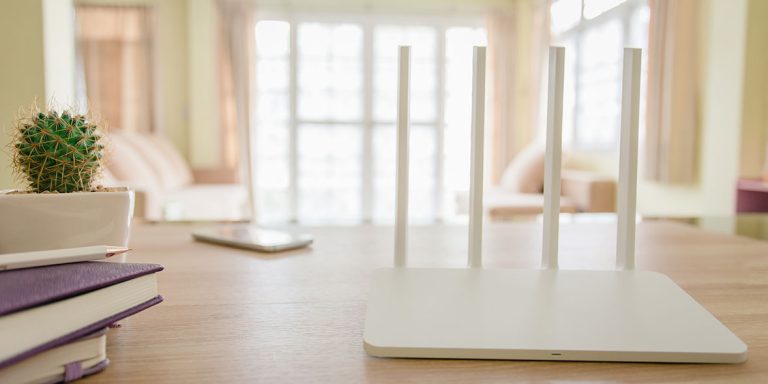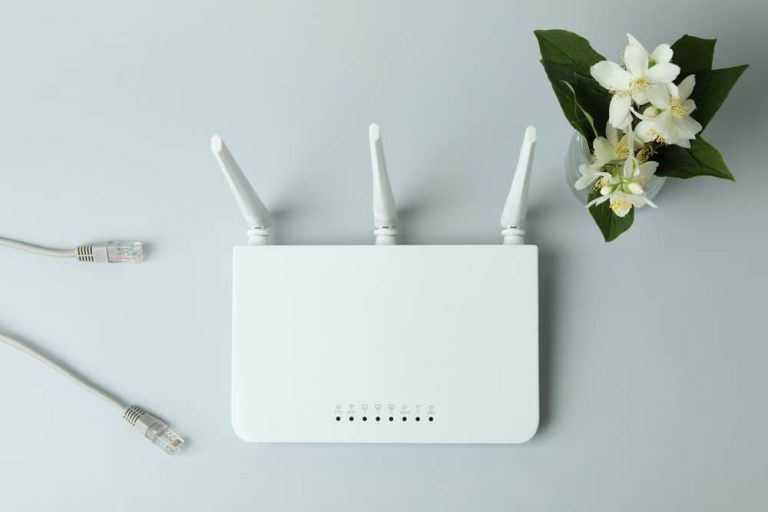My Router’s Blue Light Is on But I Have No Internet (Here is How to Fix It)
Ever had that moment when your router’s blue light cheerfully blinks, but your internet seems to have taken a vacation? It’s like having a perfectly good car with no gas in the tank.
You stare at your perfectly working router, wondering why you’re trapped in a digital blackout. You would think of all possible causes such as your ISP experiencing a downtime, someone messing with your router, or maybe someone pressed the reset button by mistake.
In this article, we explore possible reasons why your router’s blue light is on but you have no internet and some hacks you should try to get your internet back to life.
What does the blue light on the router mean?
In most cases, the blue light on your router means that your router is powered up and properly connected to the power supply. When your router’s blue light is on, it’s a positive sign that your router is functioning and is ready to transmit data.
However, having a glowing blue light doesn’t necessarily guarantee that you’ll have internet access. There could be several factors that disrupt the connection between your router and your internet service provider (ISP), hence affecting your internet connection.
My Router’s Blue Light Is on But I Have No Internet- Common Causes
Although the blue light of your router means your router should have an internet connection, sometimes this is not the case.
Your router could be having several issues that could make your internet faulty or make your internet go out altogether. Here are some issues your router could be having.
Hardware issues
One of the likely reasons why your router’s blue light is on but you have no internet is a hardware problem. Hardware issues could occur when the cables connecting your router to the modem or the power cables are damaged or they are not securely plugged in.
Inspect your router for any physical damage or loose cables. Tighten the connection of all loosely connected cables and ensure there are no visible signs of wear and tear. Remember, even a slightly loose cable can disrupt the flow of data.

Internet service provider issues
Sometimes, the culprit behind the lack of internet connectivity is your ISP. Your internet service provider (ISP) is the gateway to the online world, therefore, if they’re facing problems, it affects your connection.
Check for any outages or disruptions in your area by contacting your service provider or visiting their website. They may be experiencing technical difficulties that are affecting your connection.
Configuration problems
Router settings can sometimes become misconfigured, leading to connectivity issues. Imagine these settings as a recipe for your favorite dish. If the ingredients or instructions are incorrect, you won’t cook your dish well.
Therefore, log into your router’s web interface and review the settings to ensure they are correct. If you configured your router’s network name or password wrongly, that could be the reason your devices are not connecting to the internet.
Network interference
Wireless interference can be another reason for no internet access, even if your router is functioning fine. If there are appliances in the house that create a magnetic field, they could be disrupting the wireless connection. Devices like cordless phones, microwave ovens, and neighboring Wi-Fi networks can disrupt your signal. A good solution is changing your router’s channel to minimize interference.
Firmware update issues
If your firmware version is outdated, you can also have connectivity problems. In the same way your smartphone or computer needs updates to improve its performance and security, so does your firmware. Log into your router’s web interface and check the router version you are using.
Then, you can check if there’s a firmware update available for your router and install it if necessary. Firmware updates often include bug fixes and performance improvements to make your internet stable and more reliable.
DNS issues
Domain Name System (DNS) translates human-readable web addresses into computer-friendly IP addresses. If your DNS settings are incorrect or misconfigured, it can prevent you from accessing websites.
You can switch to a more reliable DNS server to resolve this problem. Alternatively, you can consider using public DNS servers like Google DNS to see if it resolves your internet issue.
How to fix a router that gives a signal but no internet?
When your router is on, but you have no internet there are a couple of troubleshooting tools you can use to get your internet running again. Here are the remedies you can use:
Restart Your Router
Sometimes, a simple reboot can work wonders. Power cycle your router by unplugging it for about 2-3 minutes and then plug it back in. Your router’s network will refresh, fixing any minor issues it could be having.
Check Your Router’s Cables and Connections
Other times, it could be simple errors in connecting cables to your router causing you trouble. Therefore, check the cables connecting your router to the modem and plug them in securely into your router. If you find any damaged cables, replace them to ensure they don’t cause any issues.
Review Your Router Settings
Log in to your router’s interface and check your router’s settings. Confirm the network name (SSID) and password configurations. If they are not correct configure them properly. Additionally, ensure your router’s DHCP (Dynamic Host Configuration Protocol) is enabled if you’re using it.
Update Your Router Firmware
First, confirm the firmware version on your router. You will find the firmware version information on your router’s web interface. If it is outdated, check for firmware updates for your router on the manufacturer’s website and install them.
Change Wi-Fi Channel Your Network is Using
Traffic and interferences on the channel your network is using can slow your internet down significantly. Therefore, try changing the Wi-Fi channel on your router to avoid interference from other devices.
Reset Your Router to Factory Settings
You can also perform a factory reset on your router. However, a factory reset will erase any custom settings you have put up on your router. I advise you to back up all the custom settings you have set up on your router before resetting it to ensure you reconfigure it back to how it was after the reset.
How often should you reboot your router?
You can reboot your router every 2-3 weeks to ensure a stable internet connection. A reboot will refresh your router’s network without affecting any settings you have on your network.
Additionally, frequent reboots will also fix any connectivity issues you encounter. A reboot is a simple yet effective way of maintaining a reliable internet connection.
When should you contact your service provider?
If you’ve tried all the troubleshooting steps above, but your internet connection is still faulty, it’s time to call your ISP.
They can run diagnostics on their end to identify and resolve any issues with your internet connection. Additionally, if there is an outage in your area, they can send a team to come and fix the issue.
In a nutshell
When your router is on, but you have no internet, it can be frustrating, but you can easily fix this problem by troubleshooting your network.
However, if troubleshooting doesn’t resolve your internet connection issue, you can also call your internet service provider. They will check for any issues with your network and even send a team to check if there is an issue with their cables.
Additionally, routinely check for hardware issues, review your network settings, and perform maintenance on your router to ensure your internet connection is always stable.
FAQ
Why are all the lights on my router on but there is no internet?
When all the lights on your router are on, it indicates that your router is functioning properly. However, issues like hardware problems, ISP issues, misconfigured settings, network interference, firmware updates, or DNS issues could cause trouble with your internet connection.
How do I fix no internet connection?
To fix a no internet connection issue, you can start by rebooting your router, checking cables and connections, checking your router settings, updating your firmware, changing the Wi-Fi channel of your network, and resetting the router to factory settings as a last resort.
How do I restart my router?
To restart your router, unplug it from the power source and wait for about 2-3 minutes. Then, plug it back in and allow it to boot up. A reboot helps refresh the router’s connection and resolve any minor issues your router might be having.
